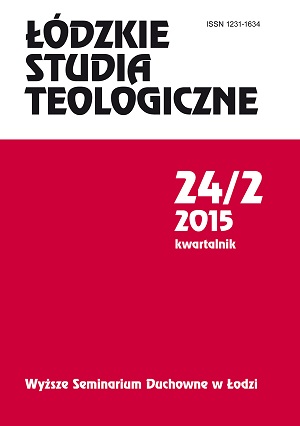Działalność opiekuńczo-wychowawcza ochronek dla dzieci przy łódzkich parafiach rzymskokatolickich i ewangelickich podczas I wojny światowej
Education and care activities of shelters for children at Roman – Catholic and Evangelical parishes during the First World War
Author(s): Joanna SosnowskaSubject(s): Christian Theology and Religion, Social history, Social differentiation, Family and social welfare, Pre-WW I & WW I (1900 -1919), Sociology of Religion
Published by: Wyższe Seminarium Duchowne w Łodzi
Keywords: care for children in Łódź during the World War I; Roman-Catholic parochial shelters in Łódź during the World War I; Evangelical parochial shelters in Łódź during the World War I in 1914–1918;
Summary/Abstract: In 1914–1918 Łódź was a community of many cultures, religions, and nationalities. Poles, Germans, Jews, Russians and representatives of other nations lived next to each other. People of different nationalities gathered in religious communities, different for separate religions, i.e. Catholics and Evangelicals grouped around parishes they lived in and Jews be-longed to Jewish communities (kahals). Regardless of their provenance, during the World War I all religious communities in Łódź tried to provide aid to those who needed it, most of all children. The scope and forms of the aid were diverse. This work discusses initiatives of Roman-Catholic and Evangelical parishes during the World War I consisting in the establishment of shelters for children at pre-school age. They also provided material, educational, and health-related aid as well as food, clothes, shoes, and medicines. Roman-Catholic parishes which existed in Łódź at that time ran 19 shelters. Most of them, i.e. 8, were established on the initiative and within the territory of St. Stanislaus Kostka parish. Other shelters operated in the Assumption, St. Anne, St. Joseph, St. Casimirus, the Transfiguration, and the Sacred Heart parishes. Each of St. Trinity and St. John Evangelical Parishes ran 3 institutions of that type. Financial situation of shelters was difficult and often depended on subsidies from the city. Although money was scarce, parochial communities led by their priests and pastors were active in providing aid for children during the World War I.
Journal: Łódzkie Studia Teologiczne
- Issue Year: 24/2015
- Issue No: 2
- Page Range: 107-133
- Page Count: 27
- Language: Polish

